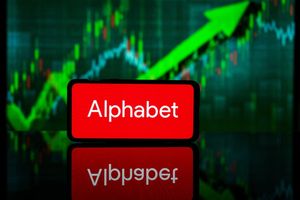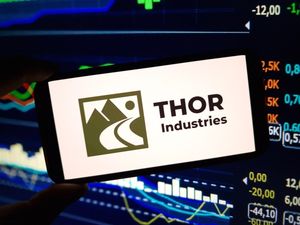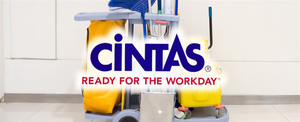
In a landmark development reshaping the landscape of tokenized finance, Ripple has announced a pivotal integration placing its RLUSD stablecoin at the heart of institutional real-world asset (RWA) liquidity. This bombshell revelation, unfolding around September 23-24, 2025, sees RLUSD serving as a 24/7 stablecoin off-ramp for tokenized funds offered by financial titans BlackRock (NYSE: BLK) and VanEck, primarily facilitated by the leading RWA tokenization platform, Securitize. The immediate implication is a dramatic enhancement of liquidity and efficiency for institutional investors, bridging the divide between traditional finance and the burgeoning digital asset ecosystem.
This strategic move is poised to accelerate the mainstream adoption of tokenized assets, offering unprecedented flexibility and real-time settlement capabilities. By enabling instant exchange of tokenized fund shares for a regulated stablecoin, Ripple is not only boosting the utility of RLUSD but also setting a new standard for how large-scale financial institutions engage with blockchain technology. The ripple effects are expected to reverberate across the crypto market, particularly for XRP (XRP:XRP), and further cement the role of stablecoins in a compliant, institutional-grade digital financial future.
Detailed Coverage: Unpacking the Partnership
The core of this groundbreaking announcement centers on a new smart contract built on Securitize's platform, which allows institutional holders of BlackRock's (NYSE: BLK) USD Institutional Digital Liquidity Fund (BUIDL) and VanEck's Treasury Fund (VBILL) to seamlessly and instantly exchange their tokenized shares for Ripple's RLUSD stablecoin. This integration is already live for BlackRock's BUIDL fund, with support for VanEck's VBILL expected to roll out shortly. This mechanism bypasses traditional banking hours, providing continuous, 24/7 liquidity for these tokenized real-world assets.
RLUSD, launched by Ripple (XRP:XRP) in late 2024 or early 2025, is a U.S. dollar-pegged stablecoin, backed 1:1 by highly liquid assets such as U.S. dollar deposits, short-term government bonds, and cash equivalents. Crucially, it operates under a stringent New York Department of Financial Services (NYDFS) Trust Company Charter and is subject to independent attestations, underscoring its design for regulatory clarity and institutional use. Since its launch, RLUSD has rapidly achieved a market capitalization exceeding $700 million, a testament to its strong foundation and growing adoption. While the initial integration leverages the Ethereum network, Securitize has confirmed plans for future integration with the XRP Ledger (XRP:XRP), further expanding the utility of Ripple's native blockchain.
The timeline leading up to this moment highlights a deliberate strategic push towards institutional digital assets. BlackRock (NYSE: BLK) launched its BUIDL fund in March 2024, quickly surpassing $1 billion in assets under management within its first year, signaling strong institutional appetite for tokenized treasury funds. VanEck similarly introduced its VBILL fund in May 2025. Ripple's focus on regulated stablecoins culminated in the launch of RLUSD, which was strategically positioned for enterprise adoption. Key players include Ripple (XRP:XRP) as the stablecoin issuer, BlackRock (NYSE: BLK) and VanEck as asset managers offering tokenized funds, and Securitize as the underlying tokenization platform. BNY Mellon (NYSE: BNY) also plays a critical role as RLUSD's primary custodian, further solidifying its institutional credibility.
Initial market reactions have been largely positive, particularly within the crypto community. While direct price movements for RLUSD were not explicitly detailed, the news generated significant bullish sentiment for Ripple's (XRP:XRP) native cryptocurrency, XRP (XRP:XRP). Analysts pointed to the partnership as a landmark move validating the utility of the XRP ecosystem, with some speculative price predictions for XRP reaching new highs. Immediately following the news, XRP (XRP:XRP) was observed trading around $2.85-$2.88, alongside a broader upward trend in the cryptocurrency market. Network activity on the XRP Ledger (XRP:XRP) also saw a notable surge, surpassing one million payments around September 22.
Market Movers: Winners and Those Forced to Adapt
The integration of Ripple's (XRP:XRP) RLUSD stablecoin with the tokenization infrastructure utilized by BlackRock (NYSE: BLK) and VanEck, primarily facilitated by Securitize, creates a clear set of winners and presents significant adaptation challenges for others in the financial ecosystem.
Ripple (XRP:XRP) emerges as a significant winner. The partnership dramatically boosts RLUSD's institutional adoption and utility, establishing it as a critical settlement layer for real-world assets (RWAs). This expands its use cases beyond traditional cross-border payments and DeFi pools. Aligning with financial giants like BlackRock (NYSE: BLK) and VanEck, even indirectly, lends substantial institutional credibility to Ripple and its stablecoin strategy, showcasing its commitment to compliant, enterprise-grade solutions. The direct redeemability of tokenized fund shares into RLUSD is expected to drive greater liquidity for the stablecoin, which has already grown rapidly. Furthermore, Securitize's planned integration with the XRP Ledger (XRP:XRP) will bring new utility and expanded access to the XRPL ecosystem, potentially increasing transaction volumes and demand for XRP (XRP:XRP) itself.
BlackRock (NYSE: BLK) and VanEck also stand to gain considerably. For BlackRock's (NYSE: BLK) USD Institutional Digital Liquidity Fund (BUIDL) and VanEck's Treasury Fund (VBILL), the integration provides holders with a 24/7 stablecoin off-ramp, allowing instant exchange of their tokenized shares for RLUSD. This significantly improves the liquidity and flexibility for institutional investors, enabling quicker transfers and potentially facilitating new DeFi strategies. By reducing friction in on-chain operations, these asset managers allow their investors to manage collateral more efficiently. As pioneers in tokenized funds, both benefit from advancing the infrastructure that supports RWA tokenization, potentially attracting more institutional capital to their digital asset offerings. BlackRock (NYSE: BLK) notably views stablecoins as a "mega force" shaping future finance and strengthening dollar dominance.
Securitize (Private) is another clear winner. By facilitating this critical integration between major asset managers and a prominent enterprise stablecoin, Securitize solidifies its role as a key infrastructure provider in the RWA tokenization ecosystem. The smart contract enabling 24/7 swaps for BUIDL and VBILL into RLUSD adds significant value and utility to its platform, attracting more tokenized assets and users. With over $4 billion in assets under management, Securitize's planned expansion onto the XRP Ledger (XRP:XRP) further extends its reach and interoperability.
Conversely, other stablecoin issuers, such as Tether (USDT:USDT) and Circle (USDC:USDC), face increased competition, particularly in the institutional and RWA tokenization sectors. While they currently lead in market capitalization, RLUSD's explicit focus on enterprise utility, regulatory clarity, and direct integration with tokenized funds from BlackRock (NYSE: BLK) and VanEck gives it a competitive edge in attracting compliant institutional capital. This development will likely compel other stablecoin issuers to innovate, improve their institutional offerings, enhance regulatory compliance, and pursue similar partnerships to remain competitive.
Traditional financial institutions, particularly those heavily reliant on legacy payment and settlement systems, will face pressure to adapt. Stablecoins, including RLUSD, offer near-instantaneous and lower-cost transactions, directly challenging traditional banking networks and correspondent banking models. This could lead to reduced revenue from wire transfers, FX fees, and payment processing. To remain competitive, traditional institutions will be compelled to integrate new technologies, including stablecoins and blockchain infrastructure, and explore new revenue streams by offering stablecoin-based solutions for B2B payments and trade finance. The evolving regulatory landscape, particularly with initiatives like the GENIUS Act, may also favor larger, more established banks as permitted payment stablecoin issuers, creating both challenges and opportunities.
Broader Horizons: Significance for the Financial Landscape
The integration of Ripple's (XRP:XRP) RLUSD stablecoin with BlackRock's (NYSE: BLK) BUIDL and VanEck's VBILL funds via the Securitize platform marks a profound shift, resonating with several broader industry trends and carrying significant implications for the global financial landscape.
This event squarely fits into the accelerating trend of Real-World Asset (RWA) tokenization. RWA tokenization, which involves representing tangible assets as digital tokens on a blockchain, is rapidly gaining institutional traction. Securitize, already a leader in this space with approximately $4 billion in tokenized assets, is at the forefront. BlackRock's (NYSE: BLK) BUIDL fund, launched in March 2024, quickly surpassed $1 billion in AUM, demonstrating the immense institutional appetite for tokenized treasury funds. The RLUSD integration provides instant, 24/7 liquidity for these tokenized assets, drastically improving upon traditional settlement timelines and unlocking new possibilities for capital efficiency and on-chain yield generation within a compliant framework. This move is a "natural next step" in bridging traditional finance and crypto, with Ripple (XRP:XRP) strategically positioning stablecoins and tokenized RWAs as a core part of the XRP Ledger's (XRP:XRP) institutional DeFi plan.
The ripple effects on competitors and partners are substantial. For competitors like Circle (USDC:USDC) and Tether (USDT:USDT), RLUSD's strategic integration with major asset managers presents direct competition in the institutional RWA settlement space. While RLUSD's current market cap is smaller, its regulatory clarity and direct institutional ties give it a distinct advantage in attracting compliant capital. For partners, Securitize (Private) solidifies its position as a critical hub for institutional tokenization, enhancing its platform's value and expanding its reach, particularly with its planned integration with the XRP Ledger (XRP:XRP). For BlackRock (NYSE: BLK) and VanEck, the integration provides their tokenized fund holders with an efficient, regulated stablecoin off-ramp, strengthening their foray into digital assets. Critically, for XRP (XRP:XRP), RLUSD is seen as a complementary "liquidity amplifier," potentially driving greater demand for XRP as a bridge currency within the XRPL ecosystem, especially as RLUSD's deployment on XRPL progresses.
Regulatory and policy implications are paramount. RLUSD's operation under a New York Department of Financial Services (NYDFS) Trust Company Charter, with 1:1 backing and independent attestations, underscores Ripple's (XRP:XRP) commitment to compliance. The proposed GENIUS Act (Guiding and Establishing National Innovation for U.S. Stablecoins), a bipartisan legislative effort for a federal stablecoin framework, mandates 100% reserve backing, regular audits, and federal licensing. Ripple (XRP:XRP) has proactively aligned RLUSD with these requirements, pursuing a national trust bank charter and a Federal Reserve master account, with BNY Mellon (NYSE: BNY) as custodian. The passage of the GENIUS Act is expected to elevate RLUSD as a federally compliant stablecoin, granting Ripple (XRP:XRP) a "first-mover advantage" in the regulated stablecoin market. This shift in oversight from the SEC to the Treasury and OCC is generally viewed favorably for assets like XRP (XRP:XRP), potentially enhancing its utility within regulated stablecoin ecosystems.
Historically, this transformation can be compared to several pivotal moments in finance. The digitization of financial markets in the 1970s and 80s (e.g., NASDAQ) dramatically increased efficiency, a parallel to RWA tokenization offering faster settlement and 24/7 trading. The emergence of Money Market Funds (MMFs) in the 1970s, providing easy access to short-term, low-risk investments, finds its modern equivalent in tokenized funds like BUIDL and VBILL, now enhanced by instant stablecoin liquidity. Furthermore, the globalization of finance and the rise of ETFs in the 1990s-present, which democratized access to various asset classes, mirrors the legitimization and broader adoption process now underway for digital assets and altcoins like XRP (XRP:XRP). This RLUSD integration is a clear signal that major financial institutions are actively testing tokenized collateral and weaving blockchain technology into the very fabric of traditional finance.
The Road Ahead: What Comes Next
The integration of Ripple's (XRP:XRP) RLUSD stablecoin with BlackRock (NYSE: BLK) and VanEck's tokenized funds via Securitize is not merely an event but a foundational step towards a profoundly transformed financial landscape. In the short term, we can expect a continued surge in the liquidity and efficiency of tokenized assets for institutional investors. The 24/7 off-ramp into RLUSD will likely see increased utilization as treasury managers and institutional traders capitalize on continuous on-chain liquidity for managing capital and exploring nascent DeFi strategies. This immediate impact will further solidify RLUSD's position as a premier enterprise-grade stablecoin, likely driving its market capitalization beyond the current $700 million mark. The planned expansion of Securitize's integration to the XRP Ledger (XRP:XRP) will be a critical short-term development to watch, as it will unlock new utility and potentially boost activity within the XRPL ecosystem.
Looking further ahead, the long-term possibilities are immense. This collaboration is a significant catalyst for the mainstream adoption of tokenized finance, aligning with BlackRock (NYSE: BLK) CEO Larry Fink's vision of a future where "every stock and bond would eventually live on a shared digital ledger." The tokenization of real-world assets is projected to grow exponentially, with market estimates reaching trillions by 2030, revolutionizing investment by offering fractional ownership, near-instant settlement, and reduced operational costs. This will likely lead to the emergence of entirely new financial instruments and the deeper integration of blockchain technology with existing financial systems. Industries beyond finance, such as real estate and intellectual property, are also expected to increasingly embrace tokenization, creating vast new avenues for investment and trading globally.
Various players will need to execute strategic pivots and adaptations. Ripple (XRP:XRP) will continue its dual strategy, positioning RLUSD as both a settlement layer for institutional RWA platforms and a key asset for DeFi and on-chain payments, with a roadmap including compliance-ready features like AMMs and ZKPs. BlackRock (NYSE: BLK) and VanEck are demonstrating a deeper commitment to blockchain, leveraging tokenization to enhance liquidity and offer new investment opportunities, signaling a strategic shift towards integrating digital assets into their core offerings. Securitize (Private) will adapt by expanding interoperability across blockchains and bringing new utility to ecosystems like the XRP Ledger (XRP:XRP). Traditional financial institutions must familiarize themselves with tokenization, invest in blockchain infrastructure, and develop new products and services around tokenized assets, preparing for 24/7 global trading and faster settlement. Regulators, meanwhile, will face continued pressure to develop consistent and clear guidelines across jurisdictions to foster market certainty and unlock tokenization's full potential.
Emerging market opportunities are abundant, including the democratization of access to previously illiquid assets through fractional ownership, enhanced capital efficiency via real-time settlement, and the development of innovative financial products blending traditional and decentralized finance. However, challenges persist, such as regulatory fragmentation across different countries, ensuring robust liquidity provision for a wide range of tokenized RWAs, technological interoperability issues, and paramount cybersecurity risks. The ultimate outcome for the tokenized finance landscape is an accelerated shift towards a hybrid financial ecosystem where traditional and digital assets seamlessly coexist. For XRP (XRP:XRP), the planned integration of RLUSD onto the XRP Ledger (XRP:XRP) is crucial; if RLUSD gains significant traction as a settlement layer, it could directly increase the utility and demand for XRP (XRP:XRP) for transaction fees or as a bridge asset, solidifying its strategic repositioning within global finance.
Final Verdict: A New Chapter for Digital Finance
The integration of Ripple's (XRP:XRP) RLUSD stablecoin with BlackRock's (NYSE: BLK) and VanEck's tokenized funds via Securitize marks a truly pivotal moment in the evolution of financial markets. It unequivocally signals a clear and irreversible shift towards the institutional adoption of blockchain technology for real-world assets. The immediate impact of 24/7 programmable liquidity for institutional investors, coupled with the robust regulatory framework underpinning RLUSD, sets a new benchmark for compliant on-chain investment products. This collaboration is instrumental in mainstreaming digital assets, expanding their access and utility for institutions, and laying a robust foundation for future innovations in both Decentralized Finance (DeFi) and the broader RWA tokenization landscape. Ripple's (XRP:XRP) strategic positioning with RLUSD is a crucial component of its overarching objective to become a leading provider of digital asset infrastructure for global financial institutions.
Moving forward, the market will undoubtedly accelerate its embrace of tokenization. This pioneering integration will likely inspire more traditional financial institutions to explore and implement similar blockchain-based solutions, driving further innovation and investment into the sector. The relationship between RLUSD and XRP (XRP:XRP) will be a key dynamic; while RLUSD provides a stable settlement layer, its growth is expected to complement XRP's (XRP:XRP) role as a bridge currency, especially as the XRP Ledger (XRP:XRP) becomes more deeply integrated into these institutional flows. The recent regulatory clarity achieved by Ripple (XRP:XRP) with the SEC settlement earlier in 2025 has significantly de-risked such institutional ventures, fostering a more predictable environment for innovation and adoption.
The lasting impact of this development lies in its ability to dismantle traditional barriers of time and geography in finance. By offering instant, always-on liquidity for tokenized assets, it moves us closer to a truly global, interconnected, and efficient financial system. This isn't just about faster transactions; it's about fundamentally redesigning the plumbing of finance to be more transparent, accessible, and programmable. Investors should recognize this as a foundational shift, not a fleeting trend.
In the coming months, as of September 25, 2025, investors should closely monitor several key indicators. First, watch the progress and impact of RLUSD's full integration with the XRP Ledger (XRP:XRP), as this will unlock new use cases and influence liquidity flows. Second, track the continued growth of RLUSD's market capitalization and its adoption beyond BlackRock (NYSE: BLK) and VanEck, looking for integrations into more DeFi platforms, cross-border payment solutions, and other tokenized asset initiatives. Third, keep an eye on new institutional partnerships for Ripple (XRP:XRP) and Securitize (Private), as network expansion is crucial for RLUSD's dominance. Fourth, remain attentive to the evolving global regulatory landscape for stablecoins and tokenized assets, as consistent frameworks will accelerate adoption. Finally, observe how RLUSD's growth influences the demand and utility of XRP (XRP:XRP) itself, paying attention to transaction volumes and any official statements from Ripple (XRP:XRP) regarding the synergy between the two assets. The overall expansion and maturation of the tokenized real-world asset market will be a critical overarching indicator of the long-term success of these pioneering integrations.
This content is intended for informational purposes only and is not financial advice.





